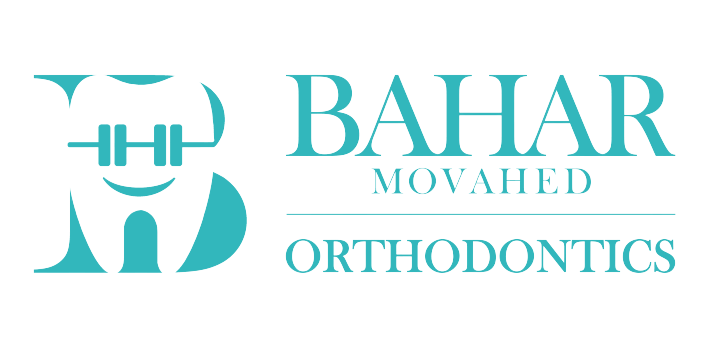Orthodontics, or dentofacial orthopedics, is a specialized branch of dentistry that focuses on the diagnosis, prevention, and treatment of problems associated with the alignment and function of the teeth, face, and jaws. When most people think about orthodontics they think about braces, but it encompasses so much more!
An orthodontist is a dental specialist who has received two to three years of additional training and experience. Your orthodontist is able to straighten teeth, correct misaligned jaw structure, and improve the function of your smile.
If you want to improve the look and feel of your smile, then any age can be a great age to see the orthodontist. The American Association of Orthodontists recommends that children first visit an orthodontist around the age of seven. However, orthodontic treatment is not exclusive to children and teens, with about one in every five orthodontic patients being over the age of 21. Whether you’re considering treatment for yourself, or for a child, any time is a good time to visit the orthodontist.
Braces are used by your orthodontist to help you improve the look and feel of your smile. There are several different types of braces to choose from, including:
- Clear braces
- Ceramic braces
- Gold braces
- Lingual braces
- Self-ligating braces
- Invisalign Invisible braces
- Traditional metal braces
- ALWAYS remember to brush your teeth after every meal and floss at least once a day.
- Make sure to use toothpaste that contains fluoride and ask your orthodontist or family dentist if you need a fluoride rinse. This will help prevent cavities!
- If you take out your retainer to eat, brush your teeth, floss, and remember to keep it safe in its container so that it does not get lost or broken.
- Keep your retainer clean too by brushing it gently with a toothbrush and toothpaste. You may also use denture cleaner every day. Do not put your retainer in boiling water or in the dishwasher.
- During your treatment, try to avoid foods with a lot of sugar (sugar increases the amount of bacteria that grows in your mouth causing more plaque and possibly cavities).
- Avoid sticky and chewy foods (caramel, chewing gum, gummy bears), hard foods (hard candy, nuts, ice cubes) or any foods that could possibly get stuck in your braces (corn on the cob, soft bagels, ribs, taffy, etc).
- Be sure to schedule your routine checkups with your family dentist. It is recommended that you continue to visit the dentist every six months.
The amount of time spent in braces can vary depending on the individual patient, as every smile responds differently to treatment. Treatment times can take anywhere between 6 and 30 months; however, most standard treatments take about 22 months.
On average, you will see your orthodontist about every six to ten weeks during treatment. This allows your orthodontist make the changes needed to progress through treatment and also allows her to keep an eye on your treatment progress, and monitor the health of your teeth and gums.
Braces do not often hurt; however, you may feel a small amount of discomfort for a couple days as your teeth, gums, cheeks, and mouth gets used to your new braces.
“Malocclusion” is the term used in orthodontics to describe teeth that do not fit together properly. From Latin, the term means “bad bite.”
With braces, you should brush your teeth at least three times a day to keep your teeth, gums, and mouth healthy and clean. Brushing regularly will help remove any food that may be caught between the braces. You should also floss daily to get in between your braces where your brush isn’t able to reach. Your orthodontist can show you how to properly brush and floss once your braces are placed.
Yes! In fact, it’s even more important that patients receiving orthodontic treatment visit their dentist regularly. With braces, food may be caught in places that your toothbrush can’t reach. This causes bacteria to build up and can lead to cavities, gingivitis, and gum disease. Your dentist will work closely with your orthodontist to make sure that your teeth stay clean and healthy while wearing braces.
Playing an instrument or a contact sport may require some adjustment when you first get your braces, but wearing braces will not stop you from participating in any of your school activities. If you play a contact sport, it is recommended that you wear a mouthguard to protect your braces or appliance.
Whether in braces or using another type of orthodontic appliance, patients should limit their intake of any drinks with added sugar, including soda pop (even diet), energy drinks, sweet tea, some juices and sports drinks. Soda pop contains acid that can weaken tooth enamel. Some juices and sports drinks contain a lot of sugar.
Drinking excessive amounts of any liquids with sugar and/or acid could lead to cavities.
It can be possible for you to have successful orthodontic treatment if your teeth have crowns or root canals. Materials are available to adhere orthodontic brackets to crowns just like you would any other tooth.
It can be possible for you to have successful orthodontic treatment if some teeth are missing, depending on your circumstances and your treatment goals. Orthodontic treatment may be able to close the space of a missing tooth, or may be able to create or save sufficient space for a replacement tooth/teeth.
The ads you are seeing may be for veneers. They cover teeth and mask the problem, but do not address the structure in the mouth or how the upper and lower teeth meet. Veneers are not permanent. Many require removal of significant amounts of tooth enamel. If plaque collects where the veneer and the remaining natural tooth meet, the area will be susceptible to what is known as “recurrent decay,” more commonly known as cavities.
Orthodontic treatment is far more than simply treating how teeth look. It’s about aligning teeth and jaws so that they meet and function effectively. It just so happens that when teeth and jaws are functioning well, they look good, too.
There are numerous potential problems from oral piercings, which can include the tongue, cheeks, lips or uvula (the tissue at the back of the throat). Particularly with tongue piercing, you can permanently damage your teeth by wearing away the enamel, or by chipping or cracking teeth. There is risk of abrasion or recession of gum tissue if it is constantly hit by the piercing. Piercing can interfere with basic functions like chewing, swallowing, talking and the sense of taste. A hole from a piercing can be a path for germs into the body and bloodstream.
It may be possible to begin treatment while pregnant, however, it is important to discuss this question with your OBGYN/physician/healthcare professional and orthodontist before you start any orthodontic treatment, as pregnancy brings on bodily changes that may affect the mouth.
Call our practice right away to make arrangements for replacement retainers. Without retainers, there can be unwanted movement of teeth.
Call our practice at (909) 597-0202 or request an appointment online through our website! Our front desk staff will be happy to help schedule your next appointment at your convenience. If you are a new patient or have been referred to our practice, please let us know, and we will provide you with all of the information you need.
No! Although Dr. Bahar is a specialist, she is trained in all aspects of dentistry and will help you determine if you are ready for orthodontic treatment at your initial exam. If you need to return to your dentist for any reason, she’ll refer you back.
We accept almost every insurance plan available! Our team is expert at evaluating your insurance benefits so you’ll know how your plan will reduce the out-of-pocket cost of your treatment.


